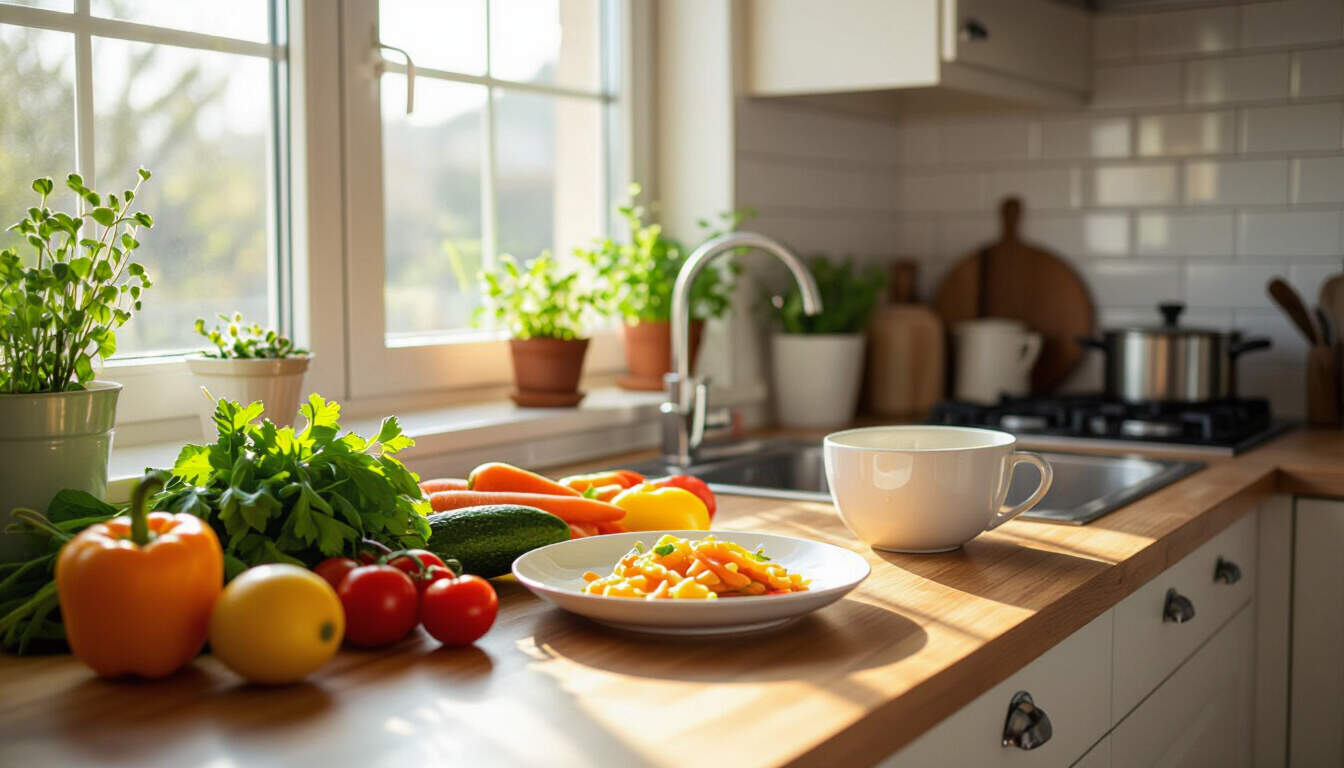Essentials of Minimalist Cooking
 by Verner Mayer
by Verner Mayer
Discover the joy of minimalist cooking, where fewer ingredients lead to simpler meals and a calmer routine. This approach offers practical ways to prepare healthy dishes with ease, helping busy individuals find balance in their daily lives through straightforward techniques and mindful choices.

In a fast-paced life, finding ways to simplify daily tasks can bring a sense of peace and clarity. Minimalist cooking offers a gentle path to this simplicity, emphasizing the use of basic ingredients and straightforward methods. This style encourages focusing on what truly matters in meals, allowing for more time to enjoy life's quieter moments.
The Core Ideas of Minimalist Cooking
One of the first steps in minimalist cooking is to recognize its value in reducing clutter. By selecting only essential items, individuals can create nourishing dishes without overwhelming their kitchens or schedules. This means choosing fresh produce and staples that serve multiple purposes, making preparation feel effortless and rewarding.
A key aspect involves planning ahead with intention. For example, a simple meal might include just a few vegetables, a protein source, and basic seasonings. This not only cuts down on shopping time but also minimizes waste, promoting a more sustainable lifestyle. Through this practice, busy professionals can reclaim precious hours in their day.
Building a Simple Kitchen
To start, consider organizing your space with care. Keep counters clear and tools limited to what you use most often, such as a good knife and a versatile pot. This setup fosters an environment where cooking becomes a calming activity rather than a chore.
When selecting ingredients, prioritize quality over quantity. Fresh herbs or seasonal fruits can add flavor without complicating recipes. For instance, a basic salad with greens, a light dressing, and perhaps some nuts provides a nutritious option that requires minimal effort. Such choices support a balanced lifestyle, where meals nourish both body and mind.
Easy Recipes for Everyday Use
Let's explore some simple recipes that embody these principles. Begin with a one-pan dish, like roasted vegetables and fish. Use just olive oil, salt, and a hint of lemon for seasoning. This method keeps things straightforward, allowing the natural tastes to shine through.
Another idea is a grain-based bowl, featuring rice or quinoa as the base, topped with beans and vegetables. Prepare it in advance for quick assembly during the week. These meals highlight how a few well-chosen elements can create satisfying results, encouraging consistency in healthy eating habits.
For those short on time, focus on no-cook options. Fresh fruit with yogurt or a vegetable wrap using whole grains offers convenience without sacrificing nutrition. By incorporating these into your routine, you build habits that promote long-term well-being.
The Benefits for Daily Life
Adopting minimalist cooking can lead to noticeable improvements in overall balance. With less time spent on elaborate preparations, individuals often find more space for relaxation or hobbies. This shift helps in maintaining energy levels and reducing stress, making it ideal for everyday people juggling multiple responsibilities.
Moreover, this approach encourages mindfulness around food. Paying attention to each step, from selection to serving, turns cooking into a meditative practice. Over time, it fosters appreciation for the essentials, enhancing the overall experience of eating.
In terms of health, relying on whole foods supports better nutrition. Avoiding processed items in favor of fresh, basic components can improve digestion and vitality. As you integrate these changes, you may notice a greater sense of control and contentment in your daily routine.
Practical Tips for Getting Started
To ease into this style, begin by auditing your kitchen essentials. Remove items that are rarely used, creating a more streamlined space. Then, create a short list of go-to ingredients that align with your preferences and dietary needs.
Experiment with variations on familiar dishes to keep things interesting without added complexity. For example, swap in seasonal produce to refresh a standard recipe. Track your progress in a simple journal to see how these adjustments enhance your days.
Finally, share meals with others to amplify the joy. Preparing food in a minimalist way can become a shared ritual, strengthening connections and reinforcing the value of simplicity. As you continue, these practices will naturally weave into your life, offering a foundation for lasting tranquility.
By embracing the essence of this approach, anyone can discover a more peaceful way to handle mealtimes. It serves as a reminder that less can indeed mean more, paving the way for a fulfilling and balanced existence.
